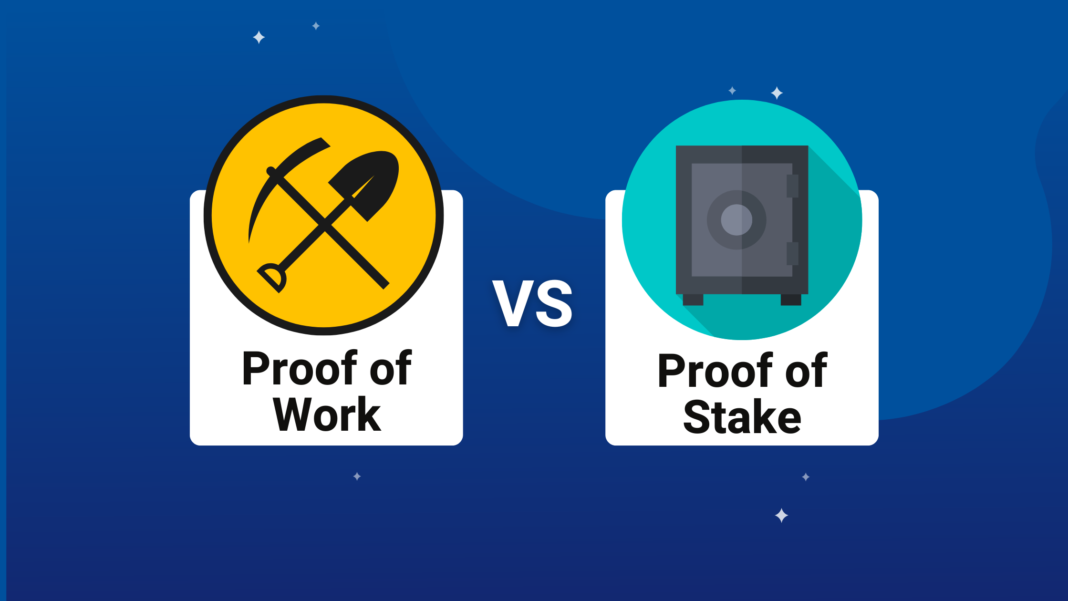What you need to know about Proof of Stake (PoS) vs. Proof of Work (PoW)
1. Introduction: Understanding Consensus Mechanisms in Blockchain
Blockchain, at its core, is a decentralized ledger. To maintain accuracy without a central authority, blockchains rely on consensus mechanisms—methods to verify transactions and secure the network against tampering. Proof of Work (PoW), initially introduced by Bitcoin, became a foundation for decentralization, using computational power to secure the network. But the high energy demand of PoW spurred interest in alternatives like Proof of Stake (PoS). PoS changes the approach by validating transactions through “staking” coins rather than computational work, making it a more energy-efficient choice. Here, we examine the mechanics, benefits, and limitations of PoW and PoS, analyzing how they support the blockchain ecosystem.
2. What is Proof of Work (PoW)?
Proof of Work is the pioneering consensus method that ensures blockchain security without central control.
- Origins of PoW: Created with Bitcoin in 2009, PoW aimed to build a secure, transparent, and tamper-resistant financial system.
- How PoW Works: In PoW, miners compete to solve complex mathematical puzzles to validate and add new transactions. This “mining” process requires significant computing power, and the first miner to solve the puzzle gets rewarded with cryptocurrency.
- Security: PoW provides robust security due to the costliness of attacking the network. Rewriting the blockchain would require controlling over 50% of the network’s computational power, making it economically unfeasible.
- Challenges: The primary downside of PoW is its energy consumption, which critics argue is unsustainable as mining requires vast computational resources, consuming electricity equivalent to entire countries.
3. What is Proof of Stake (PoS)?
PoS emerged as an alternative to address PoW’s environmental and scalability issues by basing network security on the ownership of coins rather than computational power.
- Origins of PoS: Proposed in 2011, PoS was developed to make blockchain more sustainable. In 2022, Ethereum’s upgrade to PoS marked a significant moment for mainstream adoption.
- Mechanism: In PoS, validators are selected to validate transactions based on the number of coins they “stake” (lock up) in the network. The more tokens staked, the higher the chances of being chosen to validate a block.
- Security: PoS networks rely on financial penalties for bad actors. If a validator acts maliciously, they risk losing their staked coins, creating a strong deterrent against attacks.
- Efficiency: PoS doesn’t require expensive hardware and consumes significantly less energy, making it more accessible and eco-friendly than PoW.
4. Key Differences Between PoW and PoS
- Resource Requirements: PoW requires costly hardware and high energy consumption, while PoS minimizes energy use and is generally more accessible.
- Consensus Process: PoW relies on computational puzzles, while PoS uses stake-based selection, which can reduce costs and increase scalability.
- Security Protocols: PoW’s high computational threshold deters attacks, whereas PoS uses financial penalties to incentivize honest behavior.
- Scalability and Transaction Speed: PoS typically processes transactions faster than PoW, as it is less resource-intensive, which is crucial for networks handling large transaction volumes.
5. Pros and Cons of Proof of Work
Pros:
- Security: PoW’s need for computational power makes tampering costly, providing robust security.
- Decentralization: PoW ensures a high level of decentralization since anyone with hardware can mine, depending on the network’s structure.
- Proven Record: PoW has withstood tests of time, especially with Bitcoin, which remains the most secure network.
Cons:
- High Energy Consumption: Mining requires significant energy, raising environmental concerns.
- Equipment Cost: Mining can be expensive due to hardware requirements, creating a barrier to entry.
- Scalability Challenges: PoW is generally slower in processing transactions, making it less suited for high-volume applications.
Applications of PoW: Bitcoin, Litecoin, and Dogecoin utilize PoW to secure their networks.
6. Pros and Cons of Proof of Stake
Pros:
- Energy Efficiency: PoS requires only a fraction of the energy PoW consumes, making it more eco-friendly.
- Lower Barriers to Entry: Unlike PoW, participants don’t need costly hardware, as staking simply requires owning coins.
- Enhanced Scalability: PoS processes transactions more quickly, providing greater potential for supporting decentralized applications (dApps) and smart contracts.
Cons:
- Potential Centralization: PoS can concentrate power among those who can stake the most, creating wealth inequality and centralization.
- Security Concerns: PoS networks are susceptible to attacks from large stakeholders, though mechanisms like slashing have been introduced to mitigate this risk.
Applications of PoS: Ethereum 2.0, Cardano, and Solana have adopted PoS for security and scalability.
7. Environmental Impact: PoW vs. PoS
PoW’s reliance on mining has significant environmental implications. Bitcoin mining, for instance, consumes an estimated 130 terawatt-hours annually, contributing to carbon emissions comparable to mid-sized countries. PoS, in contrast, dramatically reduces energy requirements by eliminating the need for mining hardware. For instance, Ethereum’s shift to PoS reduced its energy consumption by over 99%, highlighting PoS as a more sustainable option in a world increasingly focused on reducing carbon footprints.
8. Security: Comparing the Risks and Safeguards
Security in PoW and PoS varies, mainly in the approach to preventing attacks:
- 51% Attack Risks: In PoW, a malicious entity would need to control more than 50% of the network’s computing power. In PoS, they would need a majority stake, which is costly and risky given the potential for financial penalties.
- Economic Incentives: Both systems are structured to encourage honest behavior. PoW miners seek block rewards, while PoS validators face financial loss if they behave maliciously.
- Resilience Against Attacks: PoW networks are generally resistant to attacks due to the prohibitive costs involved, whereas PoS relies on staking and slashing (penalty) mechanisms to protect network integrity.
9. Decentralization and Distribution in PoW and PoS
Decentralization is the fundamental promise of blockchain technology, yet both PoW and PoS face challenges in achieving it:
- Mining Centralization in PoW: Mining in PoW can become centralized due to large-scale mining operations and pool dominance, leading to concerns over control.
- Stake Centralization in PoS: PoS has faced similar issues, as holders with substantial stakes wield more influence. Solutions like delegated PoS (where smaller holders delegate their tokens to validators) attempt to democratize network control.
- Community Engagement: PoS offers lower barriers for community participation, while PoW’s need for specialized equipment can deter small participants.
10. Economic Models and Incentives: PoW vs. PoS
In PoW, miners are compensated with block rewards and transaction fees, encouraging miners to invest in powerful hardware to maximize earnings. However, PoS replaces mining rewards with staking rewards, where validators earn based on the amount they stake. This can create a different economic dynamic, where those with more resources can potentially gain more influence, though PoS networks often implement mechanisms to limit centralization.
11. Current Trends and Future Adoption of PoW and PoS
The adoption of PoS has accelerated, especially after Ethereum’s transition, signaling growing industry favor for more energy-efficient alternatives. Hybrid models are also gaining traction, merging PoW’s security with PoS’s efficiency. For instance, Kadena and Decred use hybrid systems to balance PoW and PoS benefits. As the blockchain industry advances, new consensus mechanisms (such as Delegated Proof of Stake and Proof of Authority) are being explored to address the limitations of PoW and PoS.
12. The Future of Consensus: Which Mechanism is Best for Your Project?
Choosing between PoW and PoS depends on specific project needs. For applications prioritizing security, PoW remains reliable but costly. PoS is ideal for scalable, eco-friendly applications, particularly in decentralized finance (DeFi) and dApp ecosystems. However, hybrid models and new consensus approaches may offer a third route, providing flexibility and innovation in meeting diverse blockchain needs.
The Path Forward for PoW and PoS
Proof of Work and Proof of Stake each bring unique strengths and weaknesses to blockchain networks. PoW has the advantage of proven security and reliability, while PoS offers sustainability and scalability. Both are vital to blockchain’s future, as developers continually innovate and evolve these mechanisms to meet the challenges of decentralized networks.
This comparative guide highlights the ways PoW and PoS shape the blockchain landscape, offering insights for developers, investors, and the crypto-curious to navigate the fast-evolving world of blockchain. Each mechanism has its ideal applications, and the future may very well see a blend of consensus methods that cater to an increasingly diverse set of requirements.











